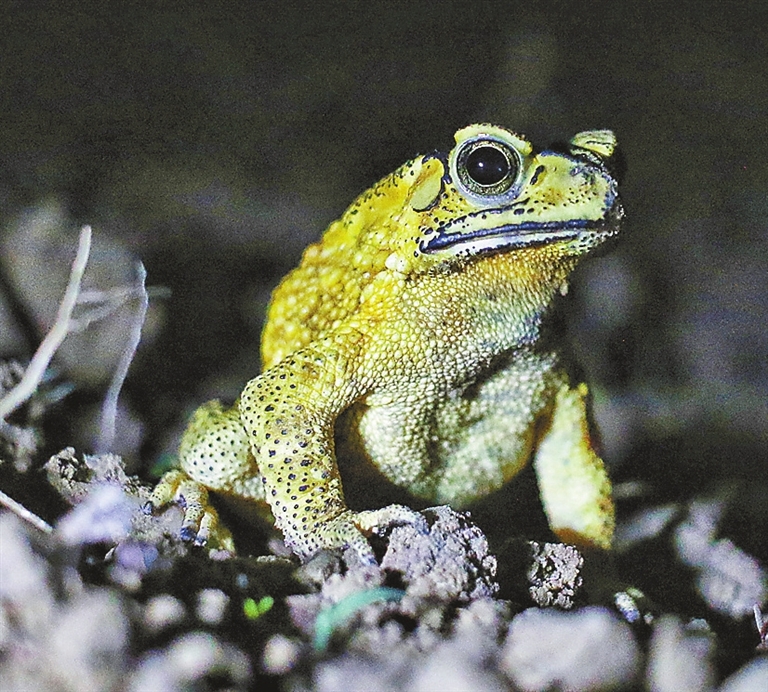
Probably the most widespread toad you can find everywhere in Shenzhen, from the major parks to your apartment complex parking lot, is the Asian common toad (Duttaphrynus melanosticus). Native to Asia, this medium-sized toad features prominent parotid glands on the back of the head and long black thick crests bordering the animal’s eyes, with a head relatively small compared to the size of its body, around 8 cm at the max. The females are usually bigger than the males. Their legs are shorter compared to those of other frogs, which would use their legs to perform powerful leaps. The Asian common toad will most likely walk and perform small leaps to move or hide from predators; but in order to counter this reduced mobility, this fascinating amphibian produces a toxin that will keep predators away and make them prefer feasting on other frogs. The color of this species is highly variable, the most common one being a yellowish or light brown color, probably greyish in juveniles, but always showing black spots over their bumpy rough skin. Sometimes, they can show signs of partial reddish colorations over part of their bodies or even over the whole body. This particular amphibian is also highly fertile and can produce thousands of eggs each time and sometimes twice a year, producing up to 80.000 eggs per year. After a three-month metamorphosis process, the new toads are ready to emerge from the water. Asian common toads feed on basically anything that crosses their way, being opportunistic predators, meaning they don’t go hunting for a specific prey but just enjoy whatever is available for them to grab. However, as invertebrate animals are their preferred prey, insects and spiders are probably the most likely animals they will eat. Although most of their predators will suffer from their poisonous nature, some species seem not bothered by it, as is the case with the Chinese cobra or crows. Frogs are among the many creatures that are part of the environment. We should all help protect our frog friends’ environment, so let’s hop to it! | 
